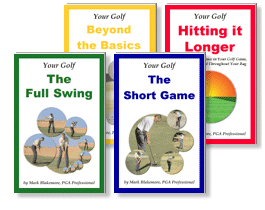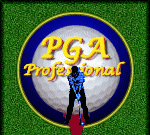Golf Instruction Articles
|
|||||
|
Here, just below, is my latest golf instruction article. I hope you enjoy it. Also see the Golf Instruction Articles Archive for more golf instruction articles. About Open Stances and Club Faces, and Ball Position
|
|
Work on your game in person with the author of this article and website at Located in the east bay area of San Francisco Or if that's not possible get the author's 4-volume series of paperback books covering the entire game in detail. |
I received a question from Subir Nag of Mumbai, India regarding the details of open stances and club faces, and related ball positions. He asked so many insightful questions about this same single topic that answering was too long for my usual Ask the Pro format. So I created this "article" in an email-style question-interjected answer format. (Subir's original text is italicized and green, my interjections are the usual plain black text. He is asking and I am answering from a right-hander's perspective. Lefties will have to do the usual reversal.)
Subir writes:
I have some doubts about and arising out of the phrases … "opening the stance", "opening the clubface" and "back and ahead [forward] in the stance," etc., esp[ecially] when playing the short game.
Firstly, opening the stance automatically opens the clubface. Not necessarily, but we'll get to that. So is the openness of clubface in relation to the stance or the target? When a player opens the club face it is always open in relation to the stance, but it could also be open in relation to the target.
Does one open [the] stance pointing to the left of target and further [then also] open [the] clubface to the right of target? This is one variation, yes. This variation is sometimes used because, though the ball typically follows the angle of the club's face more than it follows the direction of the swing path it doesn't follow the face absolutely and completely. So learning the feel of how much to open the face on any given shot requires some trial and error and, therefore, may take a while to learn - particularly given all the possible variables. Or just open the stance only? This is also a variation, and maybe the most common one. And how much should one open? This varies widely, depending on what you are trying to do. Opening by 45 degrees gives quite disastrous results to me. Since I'm not seeing what you are doing there could be many other issues at the same time. It is not uncommon to open the stance 45 degrees, or more, again depending on the purpose. But extremely open stances (perhaps substantially more than 45 degrees) are usually only used in extreme circumstances (e.g., if the terrain demanded it for some reason, or when trying to play a very lofted pitch/flop shot, or a wildly curving slice, etc.).
Secondly, about the ball position. Say the golfer starts with the ball in the middle of the stance. Now, on opening the stance by moving the left foot behind [back], if one sees [looks] at the golfer from a line perpendicular to the line from ball to target the ball will still look reasonably in the middle of the stance. However, at [looking from a] line perpendicular to the open stance line [face-on view to the golfer], the ball will look closer to the right foot, i.e. back in the stance. So which viewing angle does golf literature mean, when it says back of the stance after opening the stance? This is usually not specified (as you have discovered) but again, it could mean either or both. I think you can see that we are in the area of feel and experience to a great degree here, and there is a also lot of personal preference involved. So golf instruction writers don't usually open this can of finer-grained technical worms in popular articles; I think it is assumed that this kind of fine detail will be dealt with in lessons and personal ongoing development. Usually I'd consider the ball position in reference to the swing path, and in the simplest cases the swing path is parallel to the stance alignment. So if your swing path matches your open alignment then yes, the ball position would be farther back, from the line perpendicular to the open stance line that you referred to above, even though if you looked at it from perpendicular to the target line it would not appear to be back in the stance. Would this ball position be called "back," then? I guess it depends on who you ask, but if you are thinking about it in relation to the swing path then yes, that ball position would be back.
Then, let us say one has opened the stance towards left, and the clubface is opened towards right, WHAT IS the line of the shot - parallel to the stance? From ball to target? Or the line of the clubface? Or even if the stance is open towards left and clubface is square, which is the line of the shot? Well, yet again, the answer is that it could be either, depending on the purpose. The swing path is usually, but not always, relatively parallel to the body alignment. A couple examples to clarify further: A case where the club face is fairly square to the target,* the stance is open to the target and the swing path is to the left, parallel with the stance, might be when playing an intentional fade (shot intended to begin left of target and fade back). But a case for the other side of this is that sometimes a given player just prefers the feeling of an open stance. An example might be chipping or putting. But the openness in this case is usually mainly just in the feet, knees and maybe hips; the alignment of the shoulders would still probably be relatively parallel to the target line, so the swing path would be generally toward the target.
As you can see, there are quite a few variables and many variations in the realm of open stances, open club faces and ball positions. Of course, this goes for closed faces and alignments too. This is actually quite an important area for more advanced players, and once the general ideas are understood many players work through them by experimenting, or even subconsciously over time. To understand these details clearly and be able to make use of them in your golf game it is probably best to work with a reputable professional in person.
To summarize, I think it is probably best to think of the openness of the stance in relation to the target line, and the openness of the face and the ball position in relation to the swing path. But, again, this is oversimplified and the details will require time and experience and trial and error.
* maybe slightly closed, but mainly square
![]()
 |
 |
Work on any part of your game with PGA professional Mark Blakemore, author of this website, in person at two locations in the east bay area of San Francisco. Or get the books...
Related Content
Golf Instruction (in-person) - Private Golf SchoolsGolf Instruction Book - "Your Golf" series
Golf Instruction Articles - various
Ask the Pro - Questions & Answers, all topics
For more golf instruction articles see my
archive of previous golf instruction articles.
Feel free to send me a message to suggest a topic for future articles.

